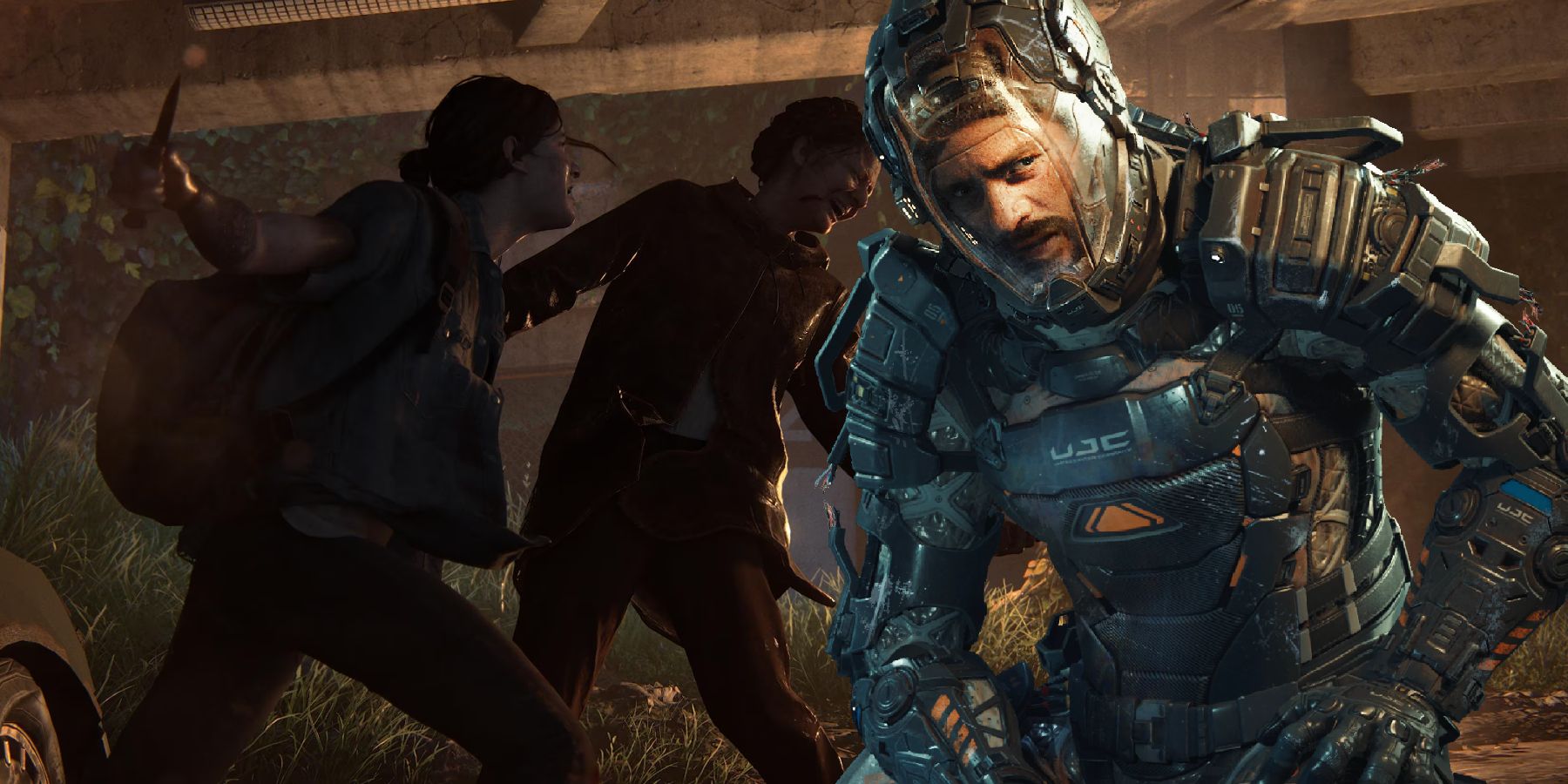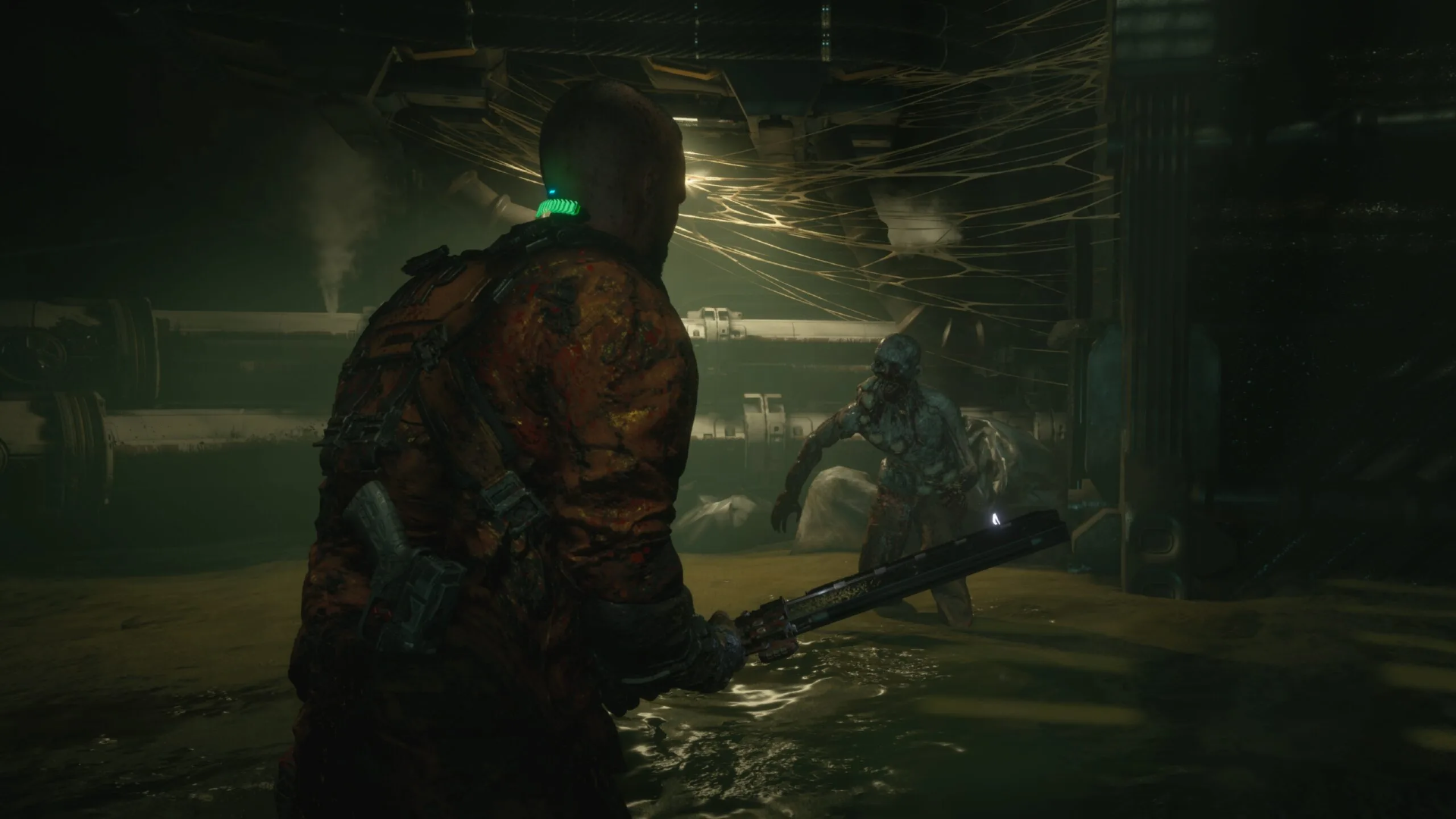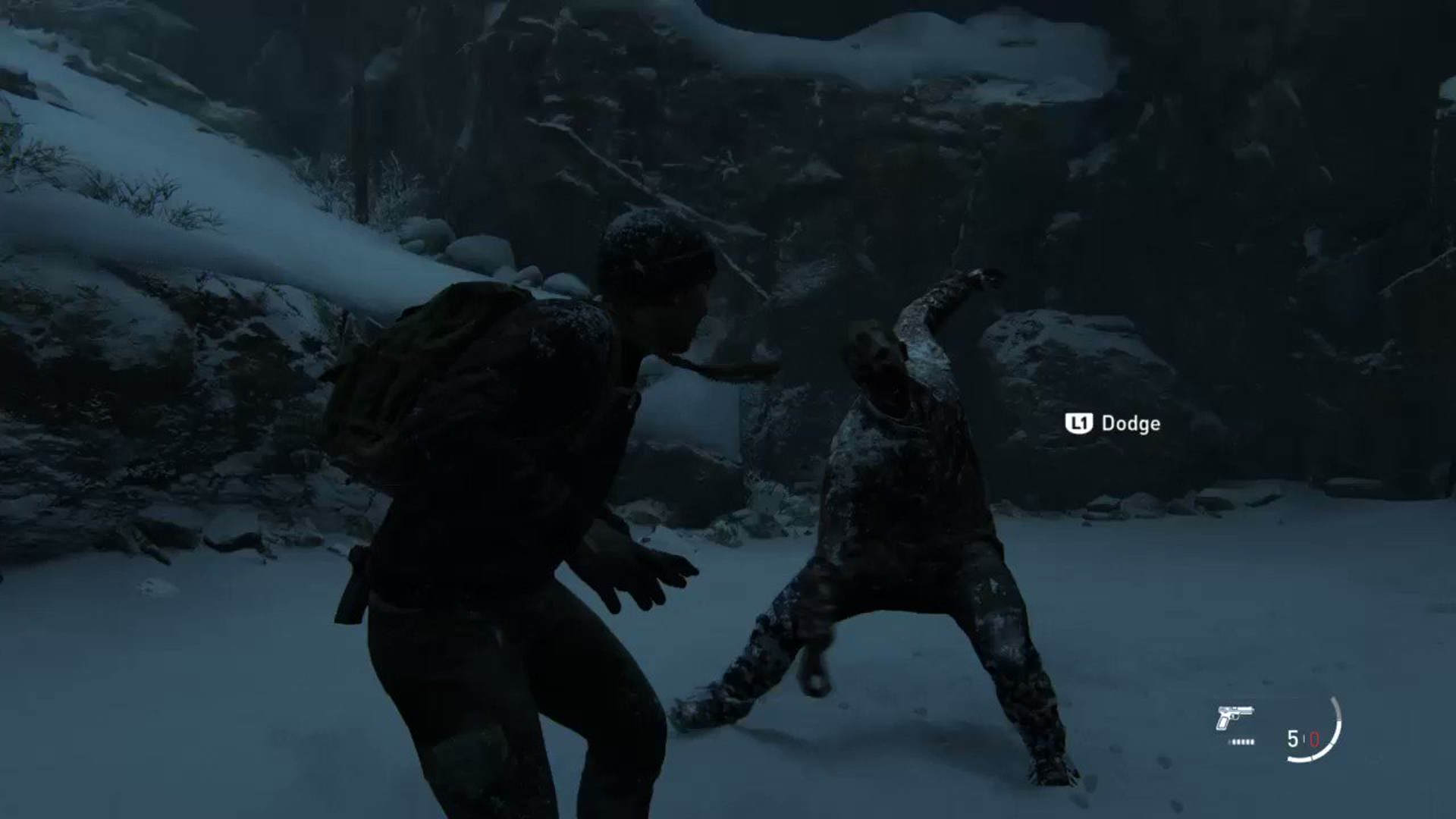The Callisto Protocol’s dodge system seemed refreshing and interesting on paper. Players lurch out of the way of incoming attacks and then find an opening to land their own melee blow with Jacob Lee’s stun baton. Each strike with the baton is weighty, and although players see the same repeated animations for finishers, it is still a satisfying string of hits. However, this melee combat does not improve throughout The Callisto Protocol unless players spend their hard-earned Callisto Credits exclusively on baton upgrades.
The Callisto Protocol’s melee combat is arguably more engaging and involved than its gunplay, which boils down to using a handful of firearms that all feel similar to one another. The pistol’s ability to get an aim-bot shot off on an enemy after a melee combo is fantastic, but therefore renders the pistol into a stun mechanic rather than its own weapon. Either way, the combat always resorts to claustrophobic dodges where the player cannot flee, and The Callisto Protocol could have instead drawn inspiration for its nuanced inputs from The Last of Us Part 2.
The Callisto Protocol’s Dodge System is Imbalanced
The Callisto Protocol’s melee encounters are serviceable when players are toe-to-toe with one opponent, but multiple enemies swarming the player is a situation that is nearly impossible to flee from. The Callisto Protocol dodge input is mapped to thumbing left and right on the left stick, meaning that any movement players make is subdued and overwritten by a dodge if enemies are near the player, while trying to thumb backward on the stick will initiate a block.
Further, The Callisto Protocol’s biophages take advantage of when players turn their back on them and can seemingly strike them from a greater distance than their hitboxes should normally allow because the player can no longer discern the distance between them. This is fine when players are intending to engage in combat, but once they want to reposition themselves, it is a nuisance.
In contrast, The Last of Us Part 2 has a dedicated dodge button mapped to L1 on PS4 that players can freely press when they would like to lunge out of the way of something. This seems awfully simple, but it at least gives players the freedom to decide for themselves precisely when they would like to dodge. If The Callisto Protocol’s own dodge system was less experimental and more refined, it may have offered a comparably satisfying experience with controls that were not rigid in their design.
How The Callisto Protocol’s Combat Could Evolve in DLC or a Sequel
It may be unrealistic to expect that The Callisto Protocol’s narrative DLC will include substantial changes for its combat. The Callisto Protocol may want to assess what fans liked and disliked about it, though, and determine whether certain alterations should be made to its dodge system. In the meantime, it would be exciting if changes to gameplay were made for if fans are to play as Dani Nakamura or another character instead of Jacob Lee. This way, The Callisto Protocol could alter its combat mechanics to accommodate what another character may be able to bring to an enemy encounter. Dani is a lot smaller than Jacob, for example, and maybe her combat would not revolve around swinging a baton as a result.
Similar to how Joel, Ellie, and Abby’s combat are all respectively unique based on the character’s size and capabilities in The Last of Us, it would be great to see future endeavors from The Callisto Protocol implement different combat mechanics. If for no other reason, The Callisto Protocol could use this as an opportunity to reevaluate what works and does not work about its current combat model.
The Callisto Protocol is available now on PC, PS4, PS5, Xbox One, and Xbox Series X/S.



